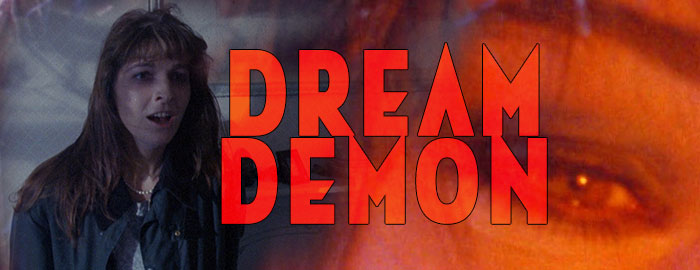
Color, 1988, 89 mins. 23 secs. / 88 mins. 9 secs.
Directed by Harley Cokeliss
Starring Jemma Redgrave, Kathleen Wilhoite, Timothy Spall, Jimmy Nail, Mark Greenstreet, Susan Fleetwood
Arrow Films (Blu-ray) (US/UK RA/RB HD) / WS (1.85:1) (16:9)

Color, 1988, 89 mins. 23 secs. / 88 mins. 9 secs.
Directed by Harley Cokeliss
Starring Jemma Redgrave, Kathleen Wilhoite, Timothy Spall, Jimmy Nail, Mark Greenstreet, Susan Fleetwood
Arrow Films (Blu-ray) (US/UK RA/RB HD) / WS (1.85:1) (16:9)
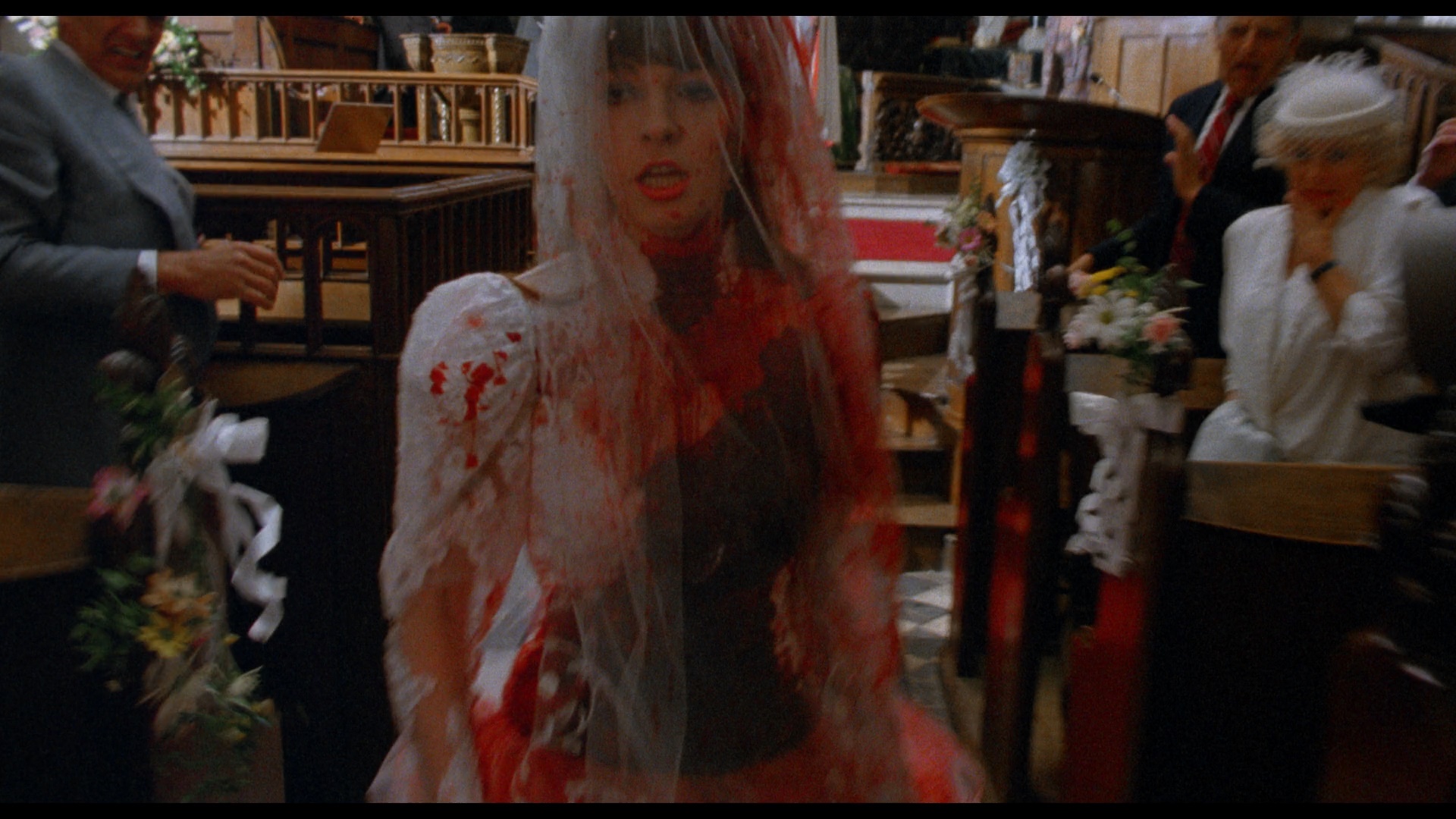 in the shuffle
in the shuffle 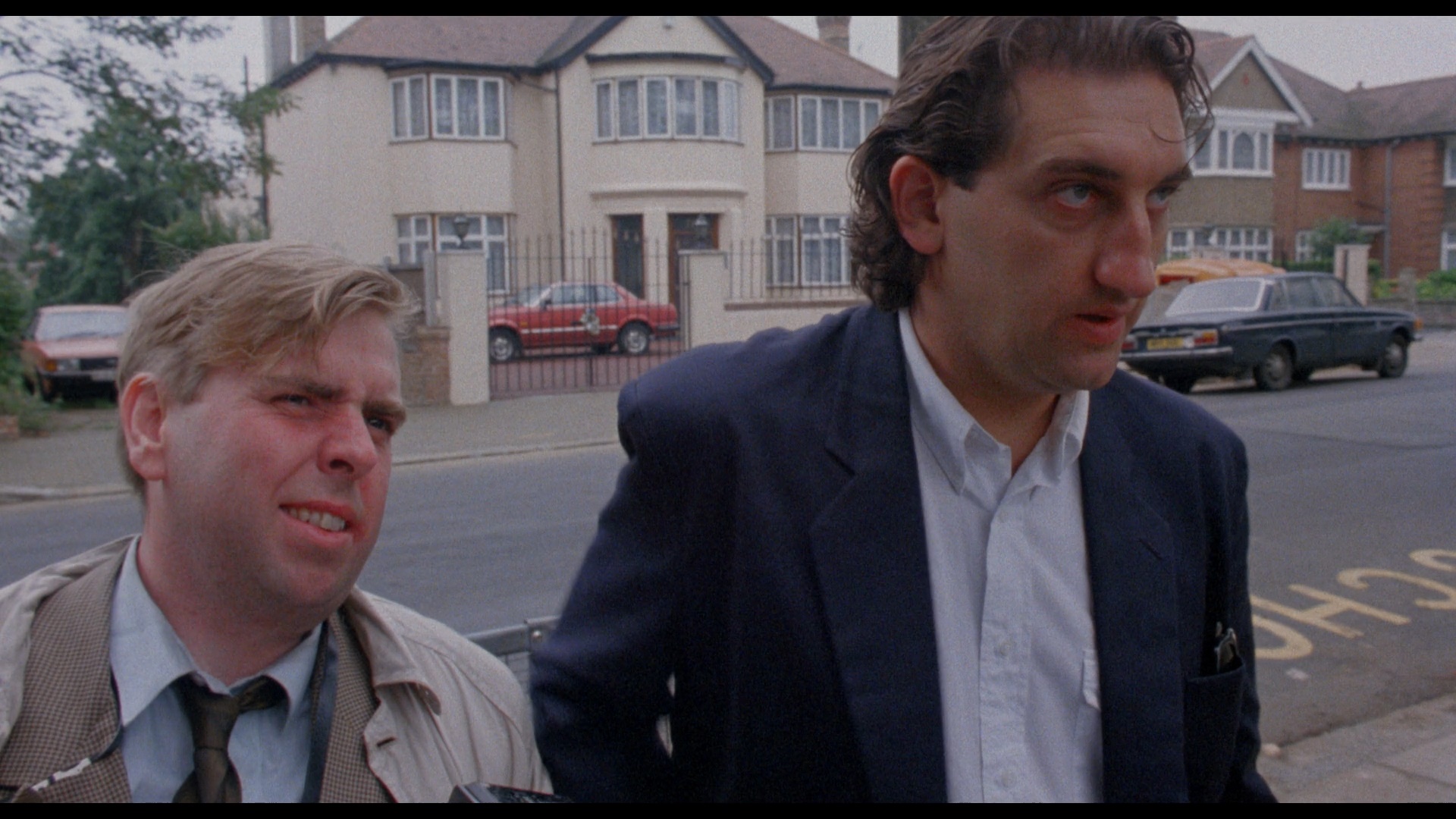 during the dying days of theatrical non-studio horror films at the end of the '80s, the British production Dream Demon is a peculiar beast that's earned a fair amount of fan support over the years from those who stumbled across it on VHS. Sort of a serious attempt to deliver a new twist on the Nightmare on Elm Street formula with a dose of Hellraiser-style surrealism in its second half, this is a film that requires a bit of work to fully embrace but delivers plenty of atmosphere and some quirky little chills that nicely evoke the subtle but unsettling nature of very bad dreams.
during the dying days of theatrical non-studio horror films at the end of the '80s, the British production Dream Demon is a peculiar beast that's earned a fair amount of fan support over the years from those who stumbled across it on VHS. Sort of a serious attempt to deliver a new twist on the Nightmare on Elm Street formula with a dose of Hellraiser-style surrealism in its second half, this is a film that requires a bit of work to fully embrace but delivers plenty of atmosphere and some quirky little chills that nicely evoke the subtle but unsettling nature of very bad dreams. 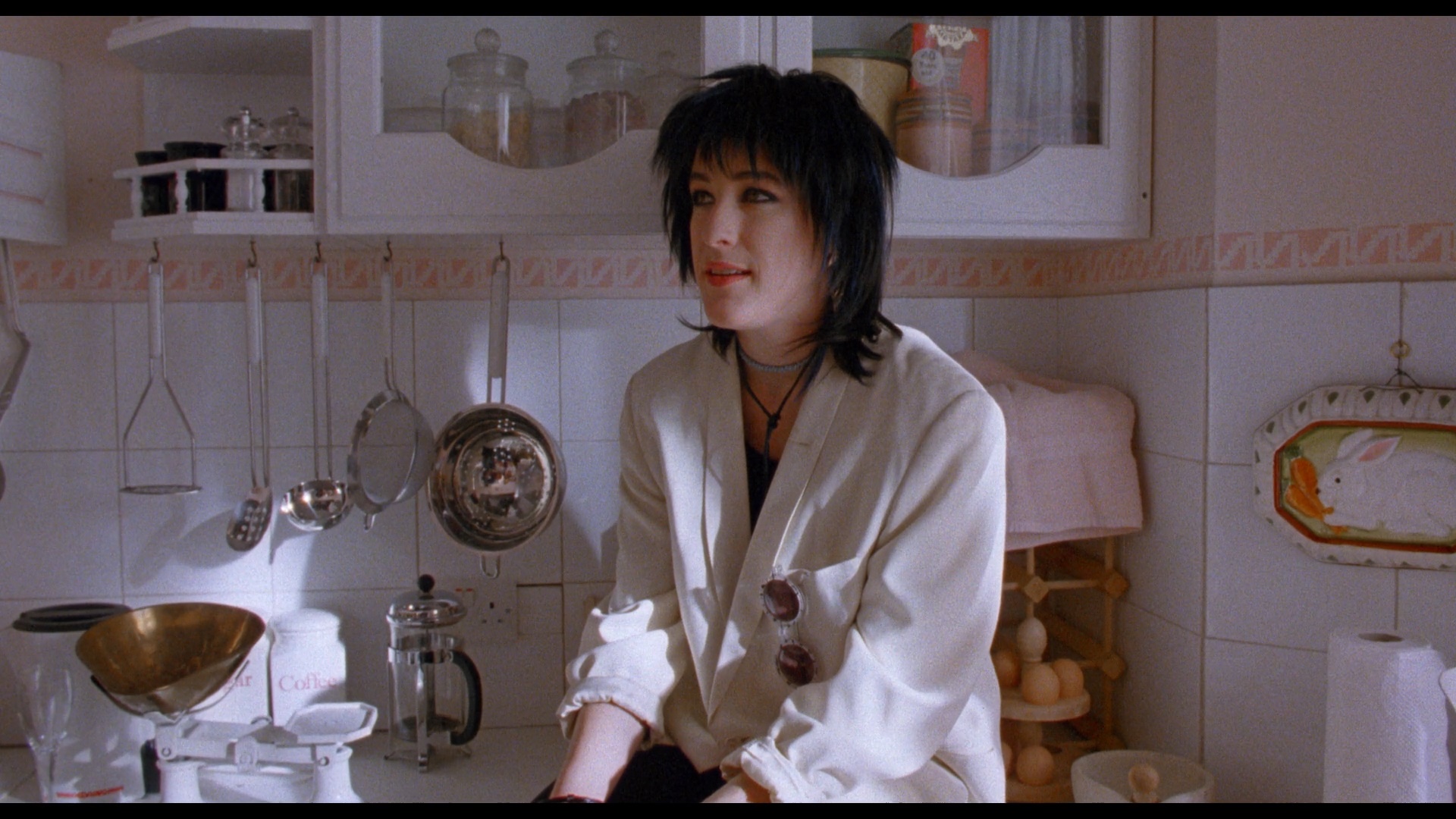 After working as a second unit director on The Empire Strikes Back, director Harley Cokeliss (who was born in America but relocated to England
After working as a second unit director on The Empire Strikes Back, director Harley Cokeliss (who was born in America but relocated to England 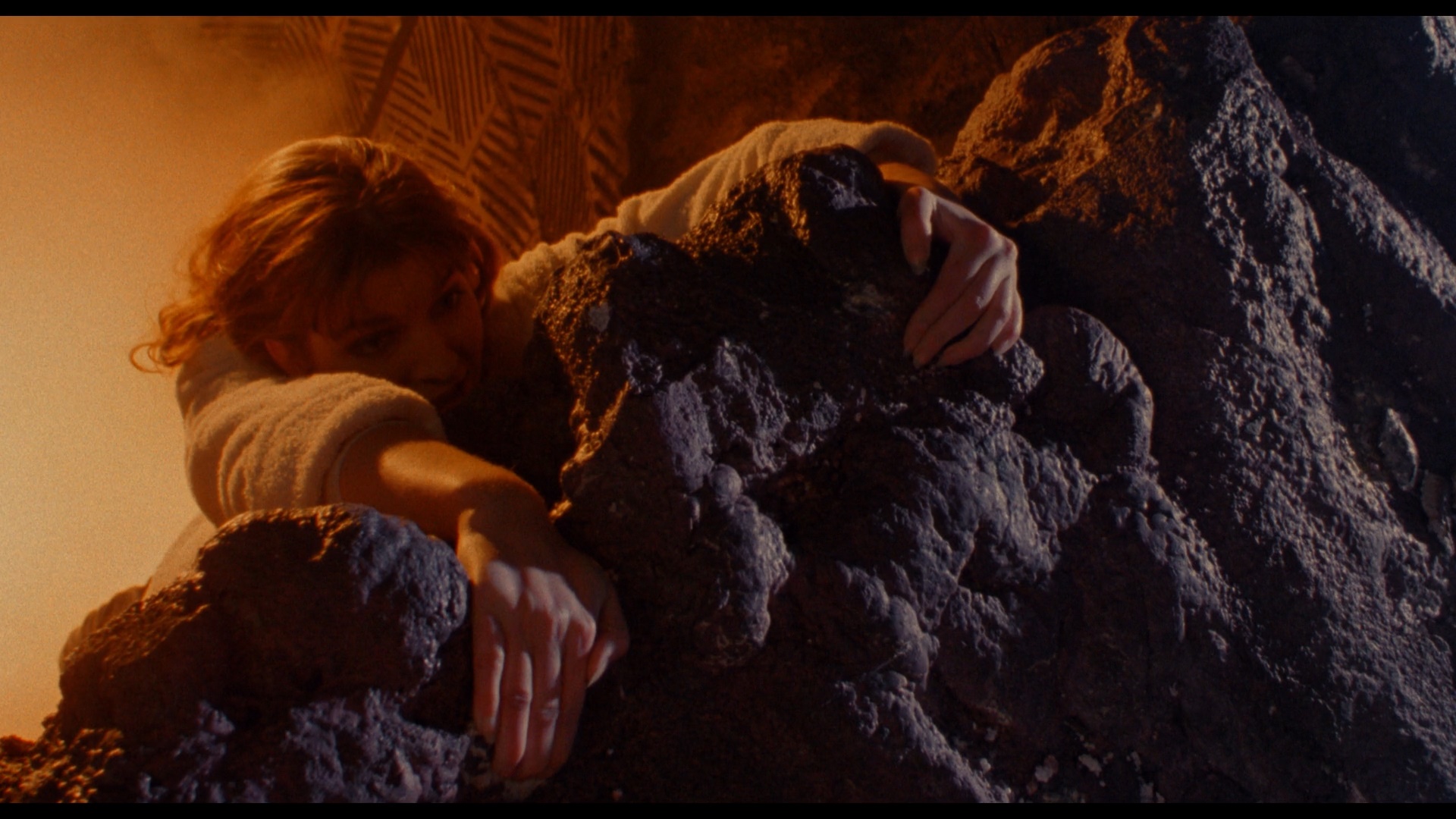 in the '60s) had embarked on a truly odd directorial career with features including Warlords of the 21st Century, Black Moon Rising, and Malone. This film came near the tail end of his theatrical work (followed only by the relatively overlooked Ray Liotta film Inferno in 2000), but he really gives it his all here with a cavalcade of shock sequences that look great even if they don't always add up or even make sense. As with most late '80s horror, there's humor injected here thanks to the reporter duo whose actors were already familiar from TV's Auf Wiedersehen, Pet. In fact, those characters originally got the last laugh (so to speak) when this film was first released, though the perplexed reaction to that choice caused Cokeliss to rethink that approach... but more on that in a moment.
in the '60s) had embarked on a truly odd directorial career with features including Warlords of the 21st Century, Black Moon Rising, and Malone. This film came near the tail end of his theatrical work (followed only by the relatively overlooked Ray Liotta film Inferno in 2000), but he really gives it his all here with a cavalcade of shock sequences that look great even if they don't always add up or even make sense. As with most late '80s horror, there's humor injected here thanks to the reporter duo whose actors were already familiar from TV's Auf Wiedersehen, Pet. In fact, those characters originally got the last laugh (so to speak) when this film was first released, though the perplexed reaction to that choice caused Cokeliss to rethink that approach... but more on that in a moment. 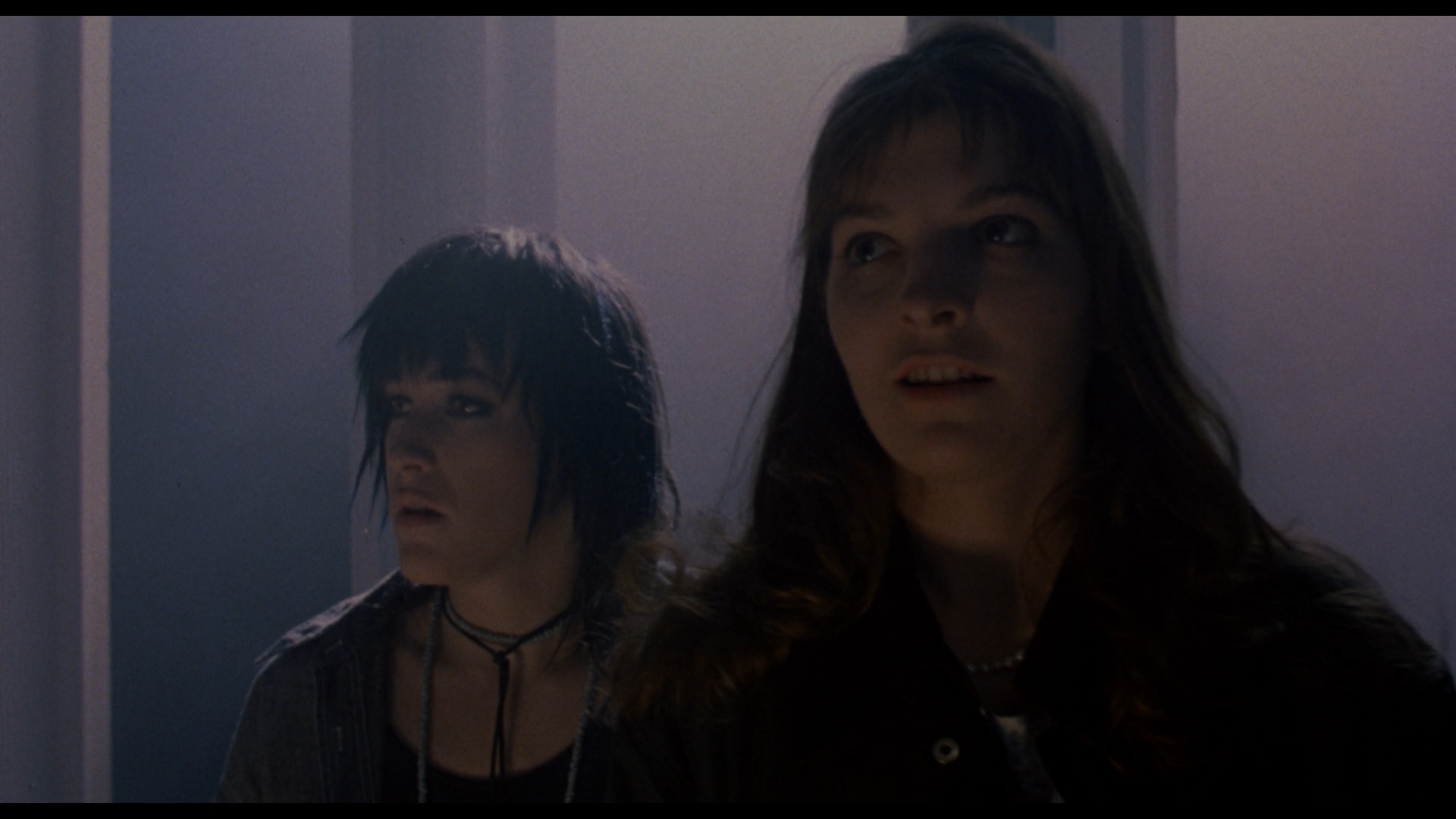 colors are very strong and the original grainy texture has been left intact. Viewing options are the original theatrical cut and a slightly revised director's cut, which drops the goofy final scene. (Truth be told, neither ending is entirely satisfying.) The LPCM 2.0 stereo mix is very solid and has some
colors are very strong and the original grainy texture has been left intact. Viewing options are the original theatrical cut and a slightly revised director's cut, which drops the goofy final scene. (Truth be told, neither ending is entirely satisfying.) The LPCM 2.0 stereo mix is very solid and has some 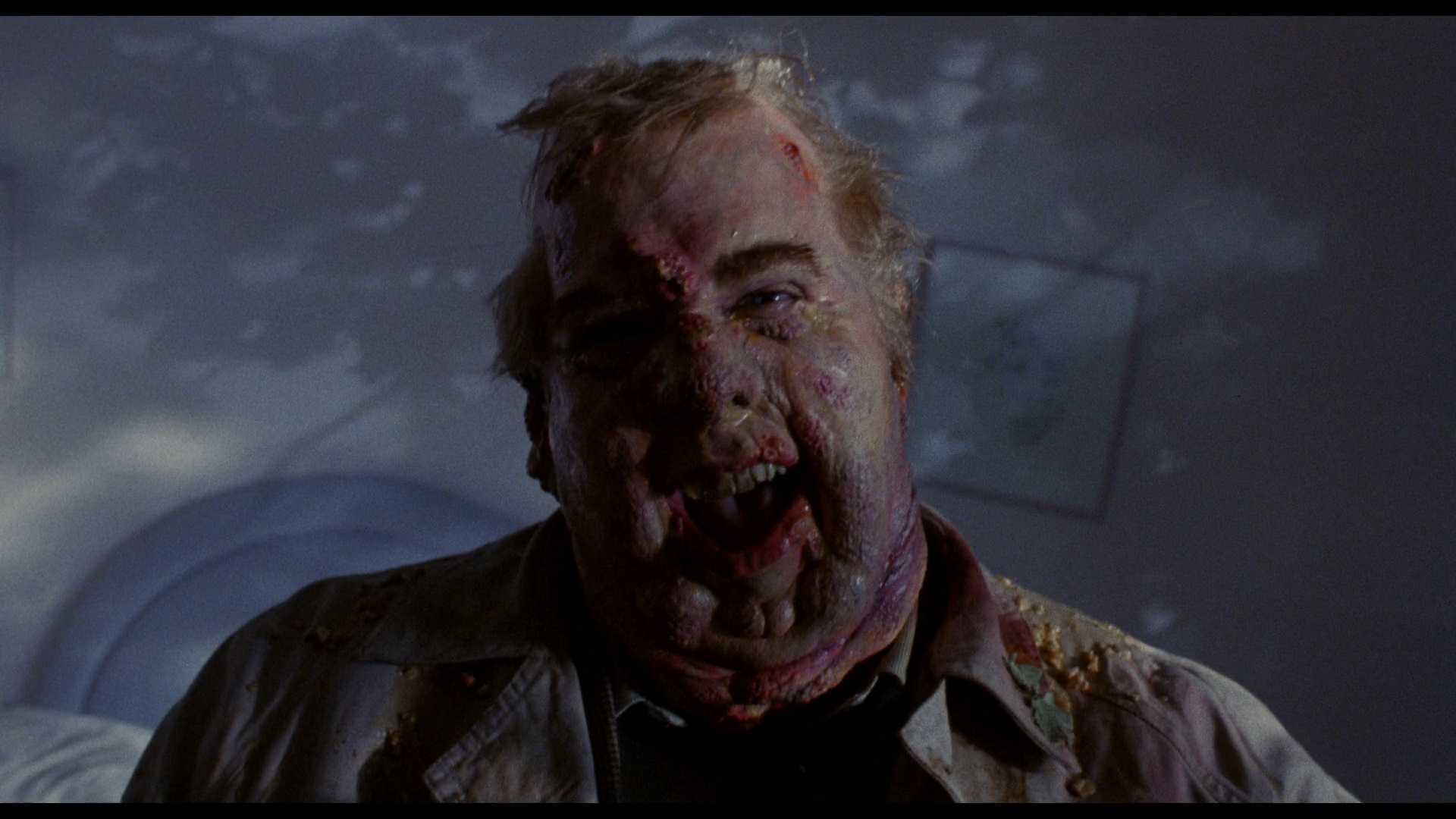 nice separation effects, especially the rumbling, choral-laced music score; optional English SDH subtitles are included as well. The film can also be played with a brief optional intro by Cokeliss (42s) about the restoration process, as well as a scene-specific audio commentary (running 46m21s) with Cokeliss and producer Paul Webster explaining how this film developed over a couple of years as an intentional "British rip-off" of that certain big Wes Craven film that morphed into a sort of satire of the tabloid brouhaha over Princess Diana. Cokeliss also pops up in "Dream Master" (27m22s) to go further into the storyboarding process and the safety measures on set, particularly the fiery finale, and his process of working with the actors. Then it's Webster's turn in "A Nightmare on Eton Avenue" (37m22s) to explain how he got into the business after starting out on the film exhibition side and worked his way through the media scene including Scala Cinema before going into full-on production associated with Palace. In "Dreaming of Diana" (16ms), Redgrave, niece of Vanessa and Lynn, chats about the Princess Diana angle, her particular joy working with Susan Fleetwood (who plays her therapist) and the unforgettable spectacle of Spall's improvisations during the more grotesque moments of his
nice separation effects, especially the rumbling, choral-laced music score; optional English SDH subtitles are included as well. The film can also be played with a brief optional intro by Cokeliss (42s) about the restoration process, as well as a scene-specific audio commentary (running 46m21s) with Cokeliss and producer Paul Webster explaining how this film developed over a couple of years as an intentional "British rip-off" of that certain big Wes Craven film that morphed into a sort of satire of the tabloid brouhaha over Princess Diana. Cokeliss also pops up in "Dream Master" (27m22s) to go further into the storyboarding process and the safety measures on set, particularly the fiery finale, and his process of working with the actors. Then it's Webster's turn in "A Nightmare on Eton Avenue" (37m22s) to explain how he got into the business after starting out on the film exhibition side and worked his way through the media scene including Scala Cinema before going into full-on production associated with Palace. In "Dreaming of Diana" (16ms), Redgrave, niece of Vanessa and Lynn, chats about the Princess Diana angle, her particular joy working with Susan Fleetwood (who plays her therapist) and the unforgettable spectacle of Spall's improvisations during the more grotesque moments of his 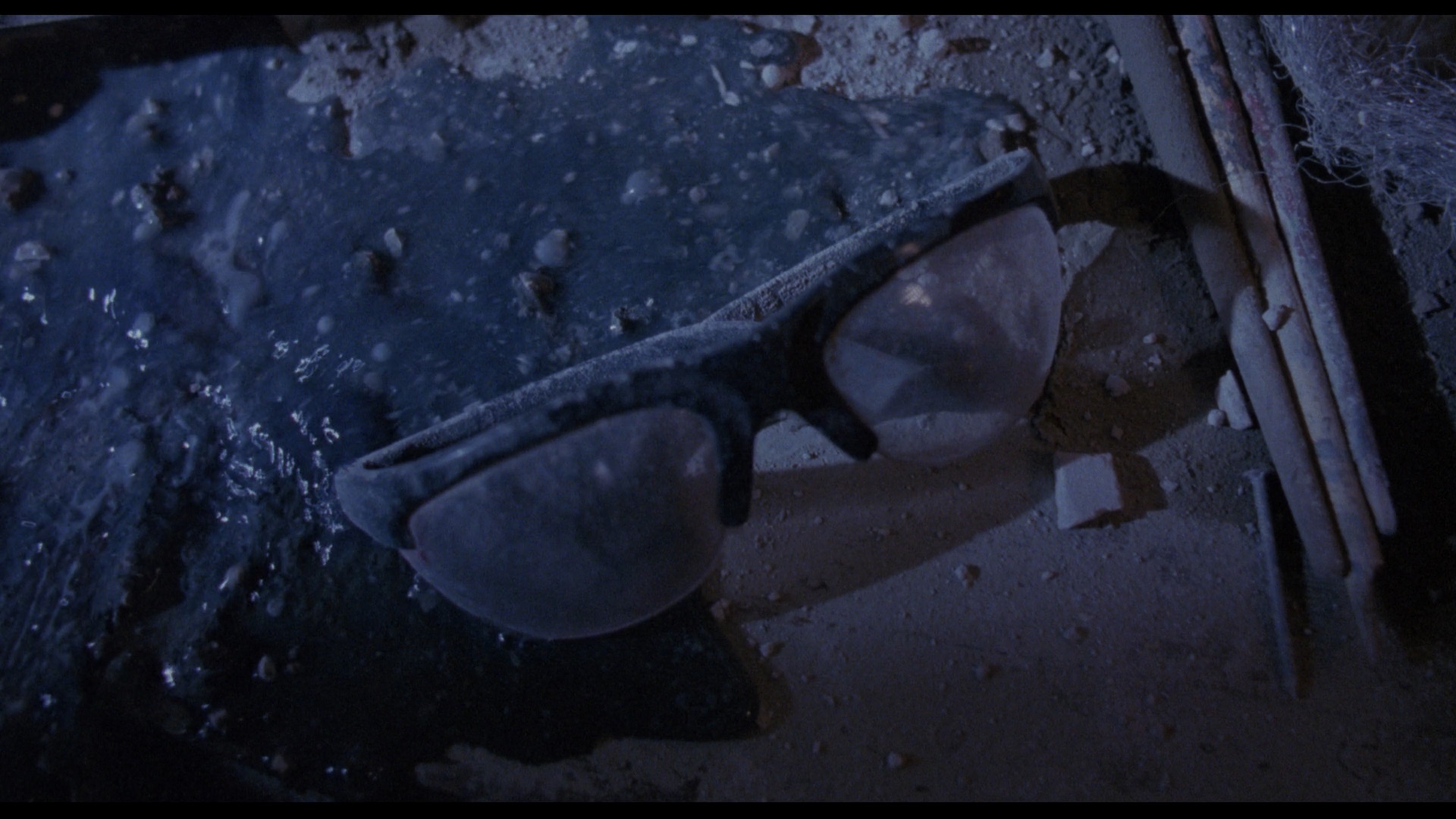 character's evolution. In "Cold Reality" (9m44s), Greenstreet recalls his time on the set including the memorable opener, which required some fancy effects work and getting "really belted." In "Sculpting the Part" (8m58s), actor Nickolas Grace explains the way he got into his character and
character's evolution. In "Cold Reality" (9m44s), Greenstreet recalls his time on the set including the memorable opener, which required some fancy effects work and getting "really belted." In "Sculpting the Part" (8m58s), actor Nickolas Grace explains the way he got into his character and 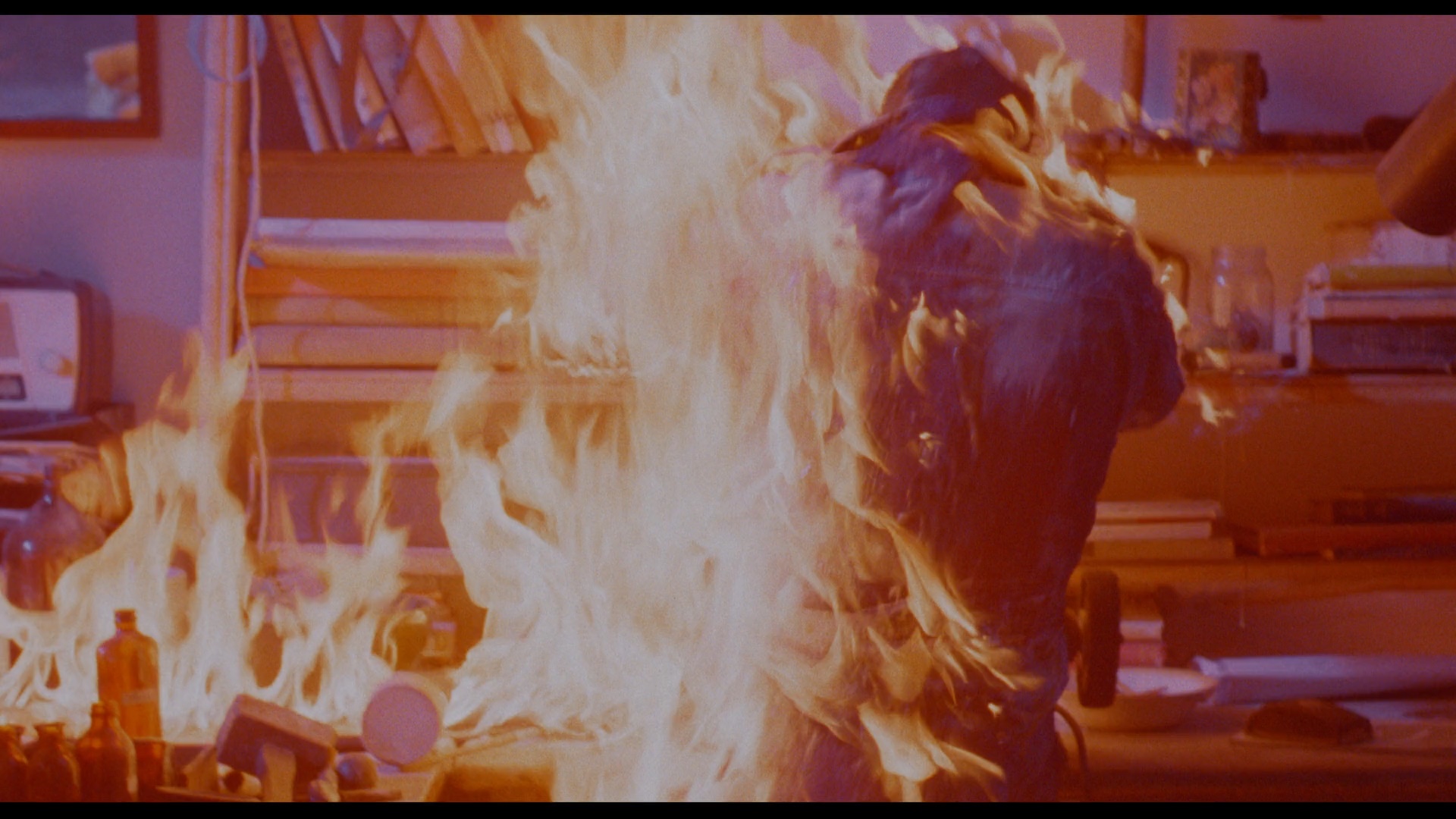 drew the line up to a point when it came to fire stunts, for obvious reasons. Then "Angels and Demons" (9m20s) features actress Annabelle Lanyon talking about how she segued to acting after studying ballet and ended up with gigs like Ridley Scott's Legend and this film, which required her to get a full body cast because... well, you'll see. Finally, "Demonic Tones" (15m13s) has composer Bill Nelson covering his music career and worked on the long process of tweaking the music repeatedly to put it together with the film during the editing process using his 16-track machine. The vintage "Foundations of Nightmare: The Making of Dream Demon" (26m26s) is a promotional featurette about the making of the film loaded with behind the scenes footage and sound bites from the set with Cokeliss (sporting an amazing beard and head of hair), Webster, Spall (in the throes of latex application), Redgrave, Wilhoite, and Nelson among others, followed by the original trailer and separate galleries for promotional photos and artwork (2m50s) and behind the scenes shots (8m50s). The first pressing also comes with an insert booklet featuring liner notes by Anne Billson (who wrote the tie-in novel) and Cokeliss.
drew the line up to a point when it came to fire stunts, for obvious reasons. Then "Angels and Demons" (9m20s) features actress Annabelle Lanyon talking about how she segued to acting after studying ballet and ended up with gigs like Ridley Scott's Legend and this film, which required her to get a full body cast because... well, you'll see. Finally, "Demonic Tones" (15m13s) has composer Bill Nelson covering his music career and worked on the long process of tweaking the music repeatedly to put it together with the film during the editing process using his 16-track machine. The vintage "Foundations of Nightmare: The Making of Dream Demon" (26m26s) is a promotional featurette about the making of the film loaded with behind the scenes footage and sound bites from the set with Cokeliss (sporting an amazing beard and head of hair), Webster, Spall (in the throes of latex application), Redgrave, Wilhoite, and Nelson among others, followed by the original trailer and separate galleries for promotional photos and artwork (2m50s) and behind the scenes shots (8m50s). The first pressing also comes with an insert booklet featuring liner notes by Anne Billson (who wrote the tie-in novel) and Cokeliss. ![]()